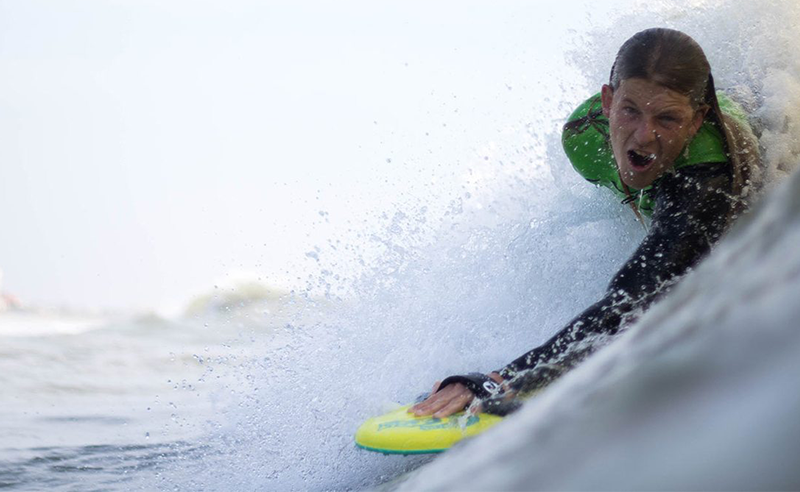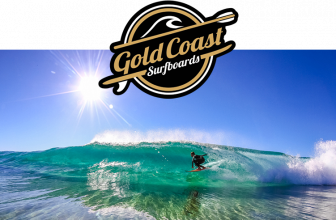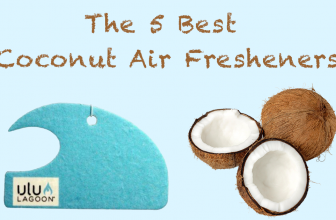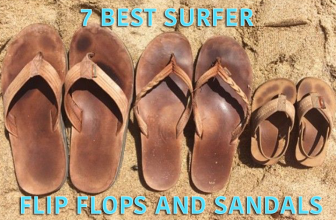
Bodysurfing is no doubt one of the most basic forms of riding a wave.
Strangely enough, there isn’t a whole lot of written text or history on when people began doing it.
More...
That being said, we can likely assume that bodysurfing, next to swimming, was one of the first water sports around, as it doesn’t really require any equipment.
We know that surfing, according to the Anthropologists at the University of Hawaii, dates back to 2000BC.
Ancient Hawaiins were no doubt bodysurfing in the water prior to creating boards to surf on.
How did Bodysurfing Gain Popularity?
One of the earlier and most thorough records of body surfing is from Captain Cook, who explored the Polynesia during the late 1700s. He and his men would attempt to catch large waves using only their bodies, as surfing was a sport that only royalty or the wealth community, was allowed to participate in. Word eventually spread that they were bodysurfing and the sport quickly grew among different coastal communities.
So what is a Handboard then?
For a long time, bodysurfing was so popular because it didn’t require any sort of equipment to get into. Anyone who could swim could bodysurf. It wasn’t until the 1960s that the handboard came into play. The Hand Surfahandboard was put into production by an Australian company, as the bodyboard craze began to grow. The boards were made of a cheap plastic and were around 1 foot long. They were essentially buoyancy devices to pull you along in the water.
How did these Handboards catch on?
It wasn’t until the 1990s that other people realized the potential of the handboard. At the same time surfing got big, younger generations who didn’t surf were looking for alternative ways to hit waves in the water. The result? A variety of companies that began producing their own handboards. One of the most prominent handboardmanufacturers at the time was SlydeHandboards. They crafted their handboards out of polystyrene foam blanks and epoxy resin. This was very similar to a lot of the boogie board manufacturers of the time.
This was also when handboarding began being looked at more seriously. The boards were finely tuned with swallowtails for speed and the board material was made lightweight and strong. Soon enough, handboarding companies were looking to make the strongest, lightest, and fastest boards around.
Bodysurfing on the West Coast
In the late 1920’s, bodysurfing began to really take off in California. One of the big Olympic swimmers of the time, Wally O’Conner, would ask watch crowds to come and watch him ride his stomach from the breaks to the shore. This took many people into shock and awe. The first major publicity came from Marion Morrison however. He was a well-known USC football player who had a massive wipeout at Balboa Pier from bodysurfing. He tore the ligaments in his shoulder, ruining his football career that was promising prior to the accident. Soon after, avid body surfer released “The Art of Wave Riding”, a comprehensive guide to bodysurfing, so that future bodysurfers could stay safe and have fun.
Biggest Handboard Companies
Slyde
Though you probably won’t believe it, the idea of handboards started from a fast food tray. Thanks to a bunch of board kids at the beach on summer break using these buoyant fast food trays to speed through the water, the idea of the modern handboard as born. Obviously fast food trays were not the ideal apparatuses for riding waves and the team at Slyde saw an opportunity to make something better.
They went into early development in California and spent tons of time crafting the best wave machines for speed and buoyancy. These days, they have a huge line of handboards for every kind of rider. There are little handboards for groms, handboards with camera attachments for surf videographers, and top-quality handboards for those who want to take on spots like The Wedge.
Hydro
While Hydro is known better for their bodyboards and fins, their small line of handboards is really solid. Why Hydro fins are most commonly associated with bodyboarding, the can also be an excellent bodysurfing fin as well.
Their most popular, the Hydro Pro, is an incredibly affordable plastic handboard that gives you tons of carve, control, and speed. They’re handboards are best suited towards beginners or those who maybe just want to play it safe.
Frequently Asked Questions
Where is the Best Place to Bodysurf?
One of the most popular bodysurfing destinations in the world is The Wedge in sunny Newport Beach, California. This man-made beach has some of the best conditions for bodysurfing. In 1993, the Wedge Preservation Society took the idea of blackballing the beach to the city council. Since then, surfboards aren’t allowed to enter the water between the hours of 10am and 5pm between May and October. This means that bodysurfers rule the waters between these times, so they don’t have to worry about surfers getting in the way or vice versa.
How Can I start bodysurfing?
Bodysurfing is traditionally done in the prone position. The prone position is when you are parallel to the waves with your torso with your hands aligned to your siders. The nose is on the ocean’s surface, giving you full exposure to the water.
Just like with surfing, prone bodysurfing requires you to carefully observe the waves to find the best one. If you end up on a mushy wave or a close out, you’ll like topple over or injure yourself. Instead, look for waves that have a bit of a curve and treat your body as if it were aboard. Turn yourself down the face of the wave and let your body ride flat while cutting along the face.
Final Thoughts
Luckily for the modern bodysurfer, the sport is the most popular that it has even been. There are major competitions all around the world from Hawaii to Australia to Africa and back. Unlike surfing, it’s still certainly gaining some traction. We do believe that soon enough, bodysurfing will be up their in the ranks. It’s the most intimate ocean sport out there. We have to give Kudos to Captain Cook, as he taught us that it was possible to enjoy the ocean, even without a surfboard in hand.





